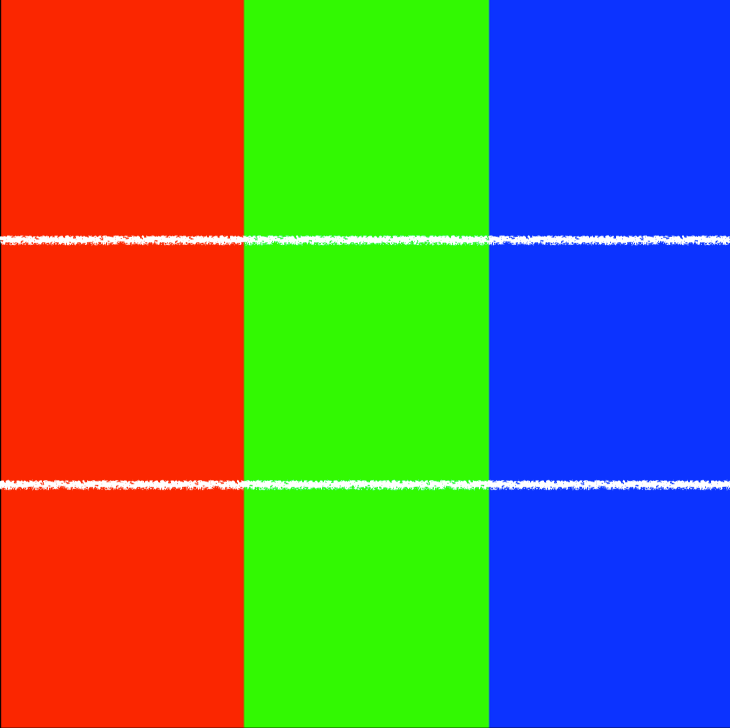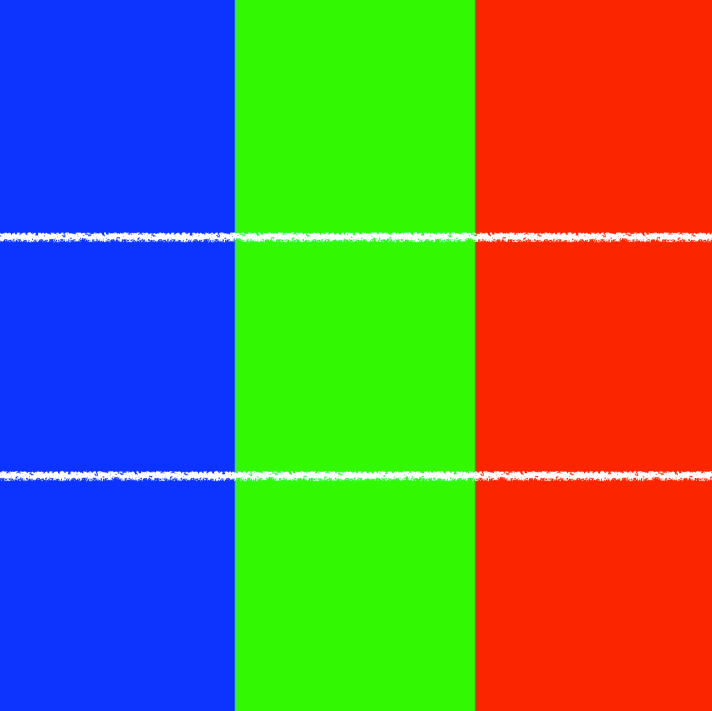Defining a function for flip#
Now that we have flawless code that flips an image, let’s create a function so that the transformation can be utilized repeatedly on many images. Define our function as flip_left_right and let it take img as its parameter. Then, bring the nested for loops that we already completed in Step 3 into the body part of the flip_left_right function as follows.
def flip_left_right(img):
for y in range(len(img)):
for x in range(len(img[y])//2):
temp = img[y][x]
img[y][x] = img[y][len(img[y])-x-1]
img[y][len(img[y])-x-1] = temp
In order to validate the code, let’s use the following example as our test.
rgb_square =[[(255,0,0),(0,255,0), (0,0,255)],
[(255,0,0),(0,255,0), (0,0,255)],
[(255,0,0),(0,255,0), (0,0,255)]]
Note that the first elements of inner lists are all red, the second elements of inner lists are all green, and the third elements of inner lists are all blue. Thus, rgb_square represents the following image.

In order to use rgb_square as our test sample to the flip_left_right function, we run the following lines.
flip_left_right(rgb_square)
Then, here is the output, as we wanted!
>>> rgb_square
[[(0, 0, 255), (0, 255, 0), (255, 0, 0)],
[(0, 0, 255), (0, 255, 0), (255, 0, 0)],
[(0, 0, 255), (0, 255, 0), (255, 0, 0)]]

Our flip_left_right function works well for the given test sample rgb_square.
Now, focus on the fact that the flip_left_right function does not have any return statement.
def flip_left_right(img):
for y in range(len(img)):
for x in range(len(img[y])//2):
temp = img[y][x]
img[y][x] = img[y][len(img[y])-x-1]
img[y][len(img[y])-x-1] = temp
It means the flip_left_right function returns None no matter what img is. Then, how does our code work well although the function returns nothing? Recall that a reference is a name that refers to the location/address of a value in memory, and that the referred value is called an object. When you assign a list to a variable, what it actually does is to assign the variable with a reference that points to the list. Passing the argument rgb_square as parameter img into the flip_left_right function,
flip_left_right(rgb_square)
does not create copies of every pixel value that rgb_square is associated with, but it rather passes a reference to the object. Therefore, the variable img in the scope of flip_left_right function is another reference to the same object as rgb_square. Any execution that handles with the reference img in the scope of flip_left_right function automatically modifies pixel values of the object, which is why rgb_square is altered the way we desired.